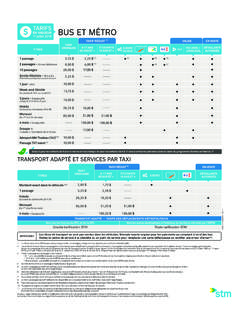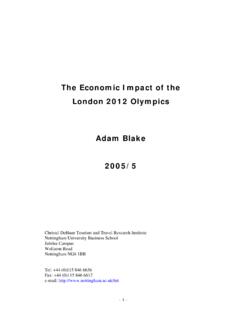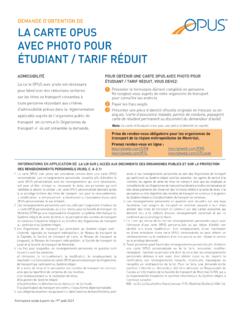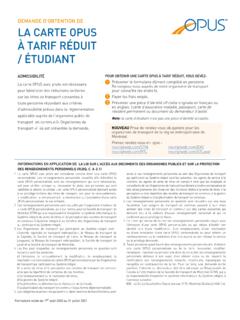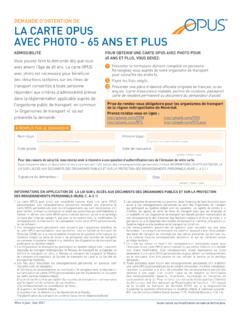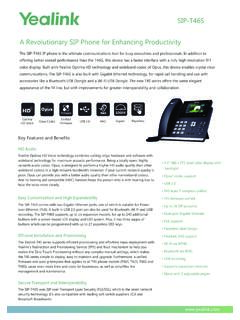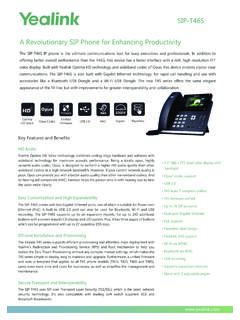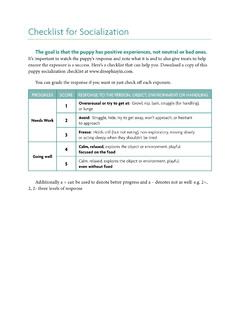Transcription of Causes and effects of 2008 financial crisis - OPUS 4
1 1 HFU Business School, Internationale Betriebswirtschaft Academic Research and Writing Prof. Dr. Taylor In winter semester 2016/17 Causes and effects of 2008 financial crisis Term Paper presented by Raphael Bartmann (Matriculation: 250328) IBW 4 Reutlingerstra e 17 78054 Villingen-Schwenningen January, 2017 2 Contents 1. Introduction .. 3 2. Causes .. 3 History US government policy .. 3 US real estate crisis and housing bubble .. 4 The role of US investment banks CDO s and rating agencies .. 5 No regulation .. 5 Relationship between Investment banks and rating agencies .. 6 The role of AIG the biggest insurance company in the world .. 7 3. Consequences .. 7 The crisis .. 7 Investor losses .. 8 Global recession .. 8 4. Conclusion .. 9 Future .. 10 5. Literature cited .. 11 6. Author .. 12 3 1. Introduction Beginning in the mid 2007 s the US financial market started to slide into the worst financial crisis since the Great Depression of the early 1930 s 1 (Thakor, 2015: ).
2 The domino effect of several events and occasions were leading first to a countrywide recession in the USA then later spreading globally. In the following this term paper will deal with the main Causes and effects of 2008 financial crisis . Unlike other topics in literature there is no consensus about the question of guilt in this sense. Among economists there are different approaches to explain the main Causes of the financial crisis . Therefore, the central ideas behind this paper are first to clarify different trigger points and secondly to answer critically the question who is to blame for it. Another part will then deal with the resulting effects for all involved parties and will show the consequences for the US and global economy. The last part will refer back to the questions posed, summarizes the main parts of this paper and will take a look in the future of the financial sector. 2. Causes To analyze the main reasons for the meltdown of the financial sector resulting in a worldwide recession and economic crisis one have to look back into US history.
3 A complex mix of government policy, financial market structure and the development of the real estate market in the USA were only a few of the main forces to collapse the financial sector. In the following it will be analyzed that also a mix of failed regulation and pure greed of money on side? of Wall Street bankers and investment firms enabled such a severe outcome for the global economy. History US government policy After the second world war, the US government was interested to reestablish the domestic economy as well as the creation of new housing grounds. Therefore, America introduced a new lending system coming from England, called mortgage - a legal agreement between two parties which transfers the ownership of a property to a lender as a security for a loan2. A mortgage allows you to loan money from a bank or other institutions in order to finance a house3. Main characteristics of mortgage loans include a specific amount of down payment, usually between 3 20 % or private mortgage insurance to insure repayment.
4 A verification of employment and income are minimum requirements for taking a mortgage loan. If a mortgage borrower fails to repay the monthly rates plus interest, the exchange value of the mortgage, as in this case the property, gets into possession of the mortgage lender. Therefore, these loans were only made for prime market citizens which means a lot of citizens were frozen out of the American dream of homeownership. So back in 1992 the US government started to introduce a new lending policy to increase the homeownership rate of low and moderate Americans 4. Traditional underwriting standards like down payment were relaxed and a second market for so called subprime mortgages was created. Under President Bush, the National Bank of America the Federal Reserve, lowered interest rates 1 Thakor (2015) 2 Parkinson (2006) 3 Cambridge advanced learner s dictionary (2013) 4 Matthews, Driver (2016) 4 to 1% from 2001-2004 to again enable the dream of homeownership for middle class citizens and also to bust economic growth and development and to create new jobs during the recession of 2001.
5 What followed was a fundamental change in the housing market. Due to low interest rates the demand for the mortgage loans increased heavily as more and more citizens saw their chance to own a house. At this time house prices were steadily rising and were expected to rise further due to increased demand in the real estate market. In the meantime, some counties in California 5 reduced possible building grounds while supply for houses is somewhat inelastic because it takes time and investment of resources to produce new homes for sale 6, the prices for houses rose even more. US Banks and other investors saw their chance to gain money in the housing market. As interest rates were very low it was easy and profitable for Banks to borrow money at 1% for itself to create mortgages. In literature these loans are seen to be the starting point for the financial breakdown, but why? US real estate crisis and housing bubble The financial sector invented an own market to trade these mortgages.
6 In order to obtain a profit, US banks sold these mortgages, also called mortgage backed securities, to other Banks and investors not only in America but all around the world. Against a specific fee the claim for repayment plus interest gets transferred to the buyer party. As default rates were historically very low due to high underwriting standards for mortgage backed securities and are also seen to be secure because of the rising prices in the housing market, banks and investors as well as pension and retirement funds invested in MBS as they promised steady (continuous) interest payments. The demand for these new financial products increased heavily and soon banks were not able anymore to stimulate the demand given on the market. The maximum capacity of prime mortgage takers was reached. Due to this, US banks started to issue subprime mortgages, to borrowers with no proof of income and employment, to create more mortgages for the market. Banks guaranteed low and flexible interest rates, diminishing down payments and often more than one mortgage, which enabled low and middle class Americans to borrow even more money for bigger houses they normally could not afford.
7 In 2006 US housing prices reached their peak and many buyers were buying not for shelter, but to resell at a quick profit 7. The housing boom was created. What followed next is a downward trend due to several events. Subprime mortgages default rates soon started to rise as borrowers were not able anymore to serve the monthly payments. In 2006 the Federal Reserve increased interest rates to 5,25% which caused the delinquency of even more and more loaners. Especially subprime mortgages with flexible interest rates were effected the most. Their monthly payments increased heavily as interest rates rose. The result was that these houses went into property of banks and investors who issued or buyed mortgage backed securities. As houses prices were up, the banks still had the opportunity to sell their property s with a profit, because emerging house prices protected investors from losses. But soon the house supply in the US market exceeded the demand for houses which indicated a stagnation of house prices immediately.
8 As a 5 Ibit. 6 Ibit. 7 Ibit. 5 consequence of stagnating house prices, the value of houses in the market dropped also. The housing bubble busted and what happened next can be described as a domino- effect . Feared of a downward trend, house holders, banks and other investors wanted to get rid of their property s before losing even more money. In the subprime mortgage market, foreclosure rates increased by 43% over the last two quarters of 2006 and increased by a staggering 75% in 2007 compared with 2006 8. Therefore, in 2007, New Century financial Corp., a leading subprime mortgage lender, filed for bankruptcy 9. The downward trend in the US housing market was now unstoppable. Even prime lenders got into trouble as their houses value decreased steadily. At this time, continue paying the mortgage was more expensive than selling the house. Suddenly as the riskiness of these subprime mortgages became clear, the first actors in the financial sectors were concerned about the subprime mortgage development.
9 The role of US investment banks CDO s and rating agencies The US banking and investment sector has a long history and has always had a central position in the American economy with its important Wall Street in New York. It was the time around the 80 s where investment banks started to grow and expanded in America and all around the world. Numerous of banks were now big enough to go public and further enlarge their business. Through mergers and acquisitions, investment banks grouped together and soon reached a monopoly status in the US financial market where only a few huge firms influence and control the market development. Five investment banks like Goldman Sachs, Lehmann Brothers, Morgan Stanley, Bear Stearns and Merrill Lynch, only three main insurance companies like AIG and three big rating agencies: Standard & Poor s, Moody s and Fitch were dominating the whole industry. No regulation In 2000 US government announced the deregulation of derivatives in the financial market.
10 As the financial sector was characterized by highly competitiveness and rather low profit margins for standard products, investment banks were encouraged to search for new financial products, especially those whose creditworthiness not everybody agrees on 10. Based on less regulation the financial market was enabled to develop financial products with speculative character and riskiness. At this time investment bankers were given almost free space on how they have to build up their business and in which sectors they focus to speculate in. Because of the introduction of subprime mortgages in the housing market, speculation for investment banks got profitable as they created special financial products for the market. One innovation and form of speculation was that mortgage payments can be sold to other actors in the market. US banks started to sell mortgage backed securities to investment banks to sell them again to other investors. Therefore, investment banks created a new financial derivative called collateralized debt obligation (CDO).
